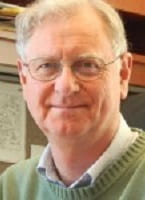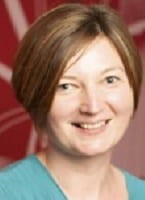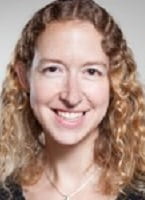Our Global Health Center contacted speakers from it’s 2015 Global Health and Infectious Disease Conference to gain their perspectives on the event’s theme of taking research from bench to implementation.
We spoke with:
- Daniel Colley, PhD, Professor, University of Georgia and Director, Center for Tropical and Emerging Infectious Diseases
- Helen Fletcher, PhD, Senior Lecturer at the London School of Hygiene and Tropical Medicine in the UK
- Christina Stallings, PhD, Assistant Professor, Department of Molecular Microbiology, Washington University
Here is what we learned:
Where do you see your own work on the “bench to implementation” spectrum, and why?

Daniel Colley (DC)
I currently pursue two types of research:
1) Field immunology on people with schistosomiasis – which is somewhat more “basic” in that it involves studies of immune responses against schistosome antigens or against vaccines in people with schistosomiasis.
2) Operational research (which I personally do not do but play a role in study design and follow-up) which is much more directly practical in its intended outcomes.
I would therefore say that at this point in my career I do bench science in the field and operational research further down the spectrum but short of implementation.

Helen Fletcher (HF)
My work is closer to implementation than bench but still a few steps away from implementation! In my work I look for immune correlates of protection that can be used for the early assessment of TB vaccine candidates in clinical trials. Once I’ve found an “immune correlate” it will have to be qualified, validated, and approved by regulatory bodies such as the FDA before it can actually be used in the clinic. That process is likely to take several years to achieve.

Christina Stallings (CS)
All projects in my laboratory start at the bench where we perform basic science research to discover and investigate novel targets for new therapeutics to treat tuberculosis and other mycobacterial infections. Once we have validated a new target for antibiotic development, we move the project forward to design or screen for inhibitors of our target of interest. And when we have identified inhibitors, we characterize their effects against mycobacteria in culture as well as in cell culture and animal models of infection. The goal is to develop these inhibitors into new antibiotics for mycobacterial infections. The entire process is very collaborative, and for each of our drug discovery projects we work with experts in synthetic chemistry, medicinal chemistry, and drug development. So it truly is a team effort. The next steps that are required to implement our findings require moving our work into the clinic. To achieve this next step, we would have to partner with other investigators involved in clinical testing of therapeutics.
What do you think the biggest challenges are to get research from being developed in the lab to being utilized in the field?
(DC): The biggest challenges to this sort of transitional/translational progression are cultural and financial. Culturally we need to realize that people who are at different points along this spectrum have different reward systems and needs. People doing research in universities and institutes need to publish papers, but for the most part for those in industry and public health institutions this is not the goal. We need to realize this and accommodate it at the various steps along the spectrum.
Financially it is clear that it takes major amounts of funding to move things along the spectrum and those are not normally associated with those at the basic end of the spectrum or even in the middle.
To address the cultural differences that are barriers to moving things “down the spectrum” we need to increase and improve communication between those at different points along the spectrum. I maintain that this is often best done over a few beers and done best more than once. – Daniel Colley
(HF): To be used clinically any product/device/assay has to be approved by a regulatory agency. The reality is that most bench research people don’t talk to regulatory people and have no idea of the steps that need to be taken to get something into the clinic. Often the necessary information has to be gathered retrospectively and early work may often need to be repeated because it wasn’t done in the correct way.
(CS): One challenge is finding people that have the expertise in translating bench research to clinical use and are also interested in the work you would like to implement. Another challenge is money. It takes a significant investment of resources and money to translate basic science research to be implemented in the clinic. Finding the funding opportunities for translation and implementation as well as getting exposure to experts outside of one’s field but in an area critical for implementing the bench research findings can be challenging.
How can we better address these issues? Do you have any examples (from your own work or others’) of when this has been successfully handled?
(DC): To address the cultural differences that are barriers to moving things “down the spectrum” we need to increase and improve communication between those at different points along the spectrum. I maintain that this is often best done over a few beers and done best more than once. Essentially the important thing is to get people to know each other well enough to respect each other and respect what each other does. Bringing people together who have different reward and value systems and who make quite different contributions to improving health will result in the basic scientist learning more about what is needed in the field and how long it takes to get research into practice, and the implementers learning more about the time and effort that it takes in the basic science world to develop a new idea.
(HF): You need to talk to regulatory people very early on in your work. A good example of this is a mycobacterial growth inhibition assay we are developing. We have been working with researchers from the FDA from the beginning of the program. They are able to advise us if what we are doing is good from a regulatory perspective – are we using standardized reagents, are we using the assay in a reproducible way etc.
(CS): There is a growing interest in facilitating the process of going from bench to bedside. There are new funding announcements that require partnerships between bench scientists and pharmaceutical or biotech companies. However, finding the industry partner generally still remains the responsibility of the investigator. There are also more and more opportunities made available for exposure and access to potential investors. For instance, at Washington University, there is the Bear Cub Fund, where basic scientists can pitch their idea to individuals interested in investing in translational research. I think more programs like these where those working at the bench get more exposure to clinicians and to drug developers will be key. In addition, the bench scientist always benefits from interactions with clinicians to gain a better understanding of the problem in the field, the standards of care, treatment protocols, and the obstacles in controlling global epidemics.
What are your recommendations for other researchers facing these issues?
(DC): Get out there and meet those who are at other stations along the spectrum. Get to know them and find out what makes their day. Do what you do best and respect and acknowledge what others do best. If you have a “discovery” that needs to go forward, find those who can take it forward – having already gotten to know them and respect them – and turn it over to them to take forward.
(HF): Talk to people!!! If you have something you ultimately want to take to the clinic you need to get together with our end-users at the beginning of the process not at the end.
(CS): Take advantage of any opportunities you can to interact with people across the entire spectrum of bench to implementation. Actively seek out collaborations that will help take the research to the next level, to the treatment of disease.